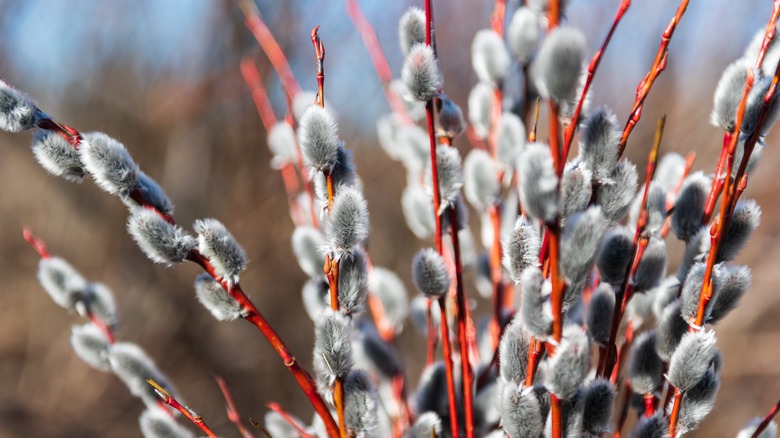Hummingbirds are beloved and welcome fluttering creatures that many bird lovers desire to see in their yards. They migrate alone, so seeing more than one or two at a time is rare. Placing a feeder is obviously a great way to draw hummers to your yard, but it’s certainly not the only way. Bull thistles, pussy willow, and dandelions, among many other plants, also attract hummingbirds.
When selecting certain plants to draw in hummingbirds, you must first know what they seek and need. Like humans, they need protein and carbohydrates to survive. Although they get most of their protein from tiny flying bugs, they can also get it indirectly from pollen. They get their carbs from nectar, so planting nectar-producing flowers can increase the chances of seeing these tiny birds near your home. Nesting is another factor to consider. Hummingbirds make nests, just like many other birds, but they typically use soft plant fibers and stringy materials from nature, so choosing fibrous plants is another great way to attract hummingbirds to your garden.
Why bull thistle, pussy willow, and dandelions attract hummingbirds

A bull thistle is an herbaceous, spiky, flowering weed that can grow several feet tall. Its purplish pink flowers, which bloom in the summer, have a spiky appearance. These plants produce a large amount of nectar and pollen, making them a great “meal” spot for hummingbirds. The birds can also use thistle in their nests. Keep in mind, though, that bull thistle is an invasive plant, so be mindful of where you plant it. Your pussy willows are also a favorite of hummingbirds because they, too, provide a rich supply of pollen and nectar for them. This flowering shrub plant blooms in the spring and can grow well over 8 feet tall. The flowers are called catkin (which means “kitten” in Dutch) because they resemble a cat’s tail, but some people think they look more like fluffy caterpillars.
Another plant that hummingbirds love? Dandelions. These yellow flowers often pop out of the grass overnight on the first warm day of the year to announce the upcoming arrival of spring. As another weed, dandelions aren’t typically welcome in the lawn. In a garden, maybe. Hummers tend to use the down from dandelions to line the inside of their nests, so these three plants provide a dual purpose: both as nest material and as a food supply.